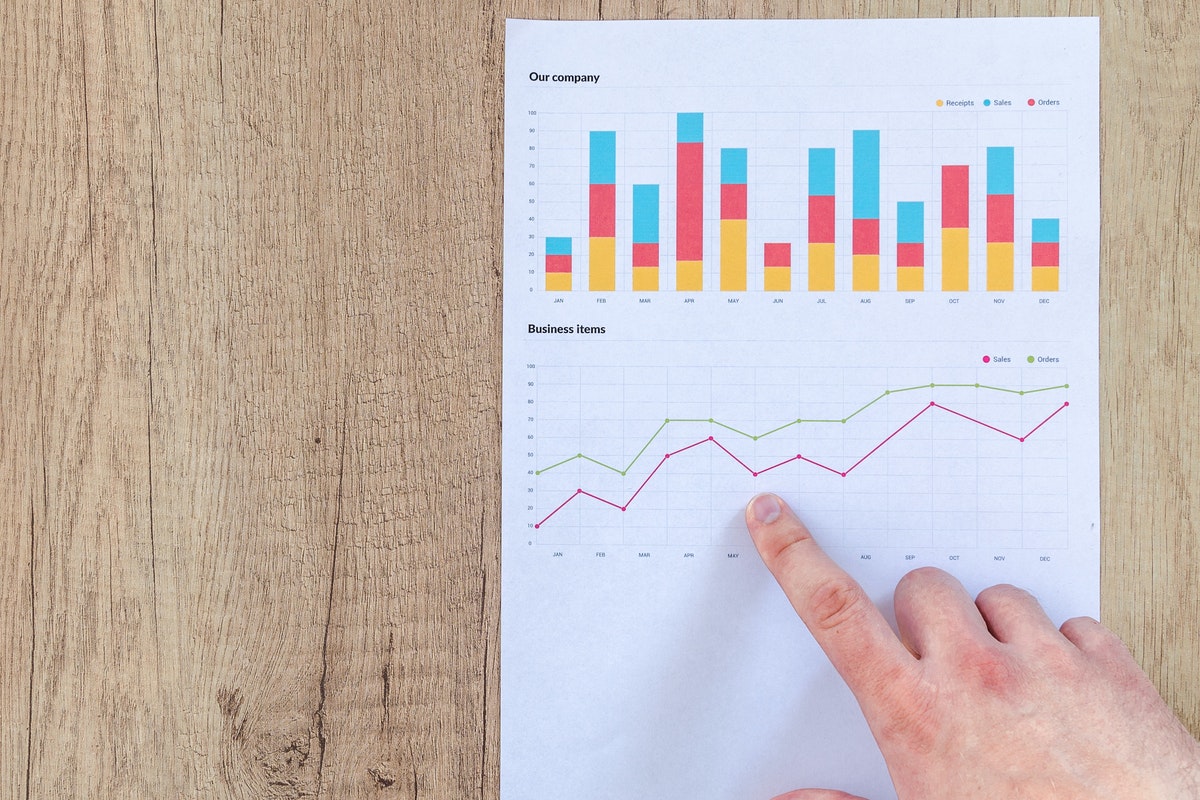Once you begin trading, you’re faced with a new challenge – successfully managing the course of your brand-new business and making sure it’s a profitable enterprise.
It’s easier to manage your startup’s sales and finances when you have access to the best possible information and data about your performance. Tracking specific metrics and key performance indicators (KPIs) allows you to see how you’re performing against your targets – so you can take action to improve performance, sales, growth and profitability.
But which KPIs should you be tracking?
Sales and conversion rates
An obvious metric to track is the number of sales you’re making each month. You’ll have set a target for these sales in your business plan, so it’s important to record each sale and see how the startup is performing over the first six months of the business.
It’s also important to log and track the drivers that lead to these sales. How many sales enquiries are you receiving? How many of these enquiries are being converted into actual sales? How many customers are being engaged by your marketing campaigns, and is this engagement leading to an interest in your products and/or services.
The more detail you can track from your sales and marketing activity, the more forensic you can get with which campaigns are actually delivering the goods.
Sales revenue and other revenues
When customers buy your goods, that creates income (or revenue) for the business. Ultimately, no business can succeed unless it’s generating enough revenue to keep the wheels turning in the business. So, tracking your sales revenue is a vital measure of your financial health. Tracking your various revenue streams over time keeps you in control of your finances and helps you make the right decisions. You can track performance against your revenue targets. You can forecast how much working capital you’ll have at a future point in time. And you can see if there’s enough cash in the bank to fund your projects and growth plans.
Cashflow and ongoing cash position
Good cash flow management is all about balancing the process of cash coming INTO the business and cash going OUT of the business. Recording and tracking your cash position is easy to do with the latest cloud accounting software and cashflow apps, so there’s no excuse for not tracking your cash position.
Ideally, you want the business to be in a positive cash flow position (with more cash coming in, than going out). But to achieve this, it’s helpful to see these cash inflows and outflows in real-time. With up-to-date metrics on your cash flow position, you can make informed decisions about spending, payment of bills and where additional cash and funding may be needed.
Debtor days and aged debt
When customers fail to pay your invoice on time, that creates an aged debt – money that you SHOULD have received but which the customer has yet to pay. An aged debtor report shows you which invoices are unpaid, which customers haven’t paid, and the total size of this debt.
Your debtor days number is a metric that shows the average number of days it takes your customers to pay you. Anything above 45 days is bad news, so you want to aim to keep this number between 14 to 30 days, if possible. A large amount of aged debt will leave a hole in your cashflow – and that can quickly start to impact on the day-to-day running of the business.
Gross profit margin
Generating a profit is crucial to the continued success of your startup. Having metrics to measure your profitability is an important part of managing your finances.
One common way to do this is to track your gross profit margin. This metric shows the amount of profit made BEFORE you deduct things like overheads and the cost of goods sold (COGS), shown as a percentage. The formula for calculating your gross profit margin looks like this:
Gross Profit Margin = Gross Revenue minus COGS, divided by Net Revenue, multiplied by 100
- Deduct your COGS value from your gross revenue to find your gross profit.
- Divide this gross profit by your revenue.
- Multiply the resulting number by 100 to get a percentage.
- This is your gross profit margin as a percentage of gross profit
- A percentage of 50% to 70% is healthy, but aim for a big margin as possible
By keeping a close eye on these financial metrics and KPIs, you have the best possible insight into the performance of your new startup – and that’s invaluable as your startup journey unfolds.
If you’re at the early stages of planning out your business idea, please do get in touch. We’ll help you set up a custom KPI dashboard to manage the future path of your business.
by Krushang Vaidya | May 24, 2022

